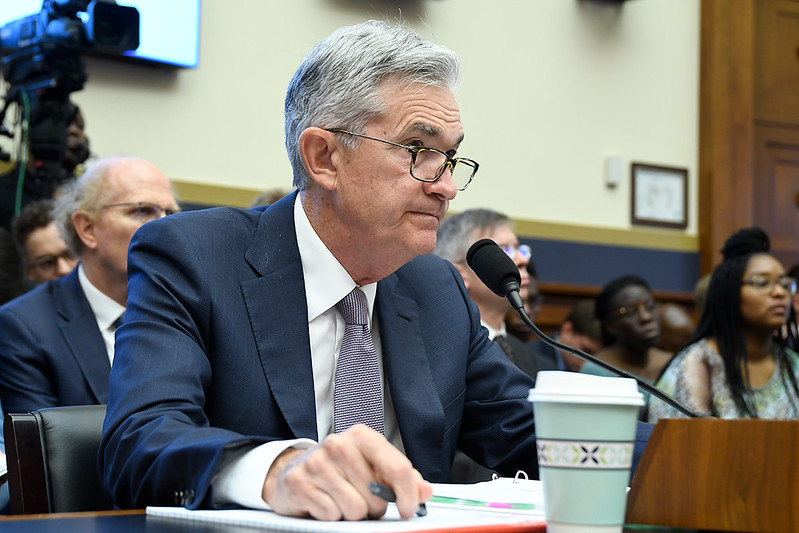
Chair Powell presents the Monetary Policy Report to the Committee on Financial Services. July 10, 2019. Photo courtesy of the Federal Reserve.
In Barron’s, Viral V. Acharya and Raghuram Rajan explain how quantitative easing may have left the banking system vulnerable to volatility. They conclude:
There is plenty of blame to go around. But leaving aside the banks’ risk management and bank supervisors’ apparent failures, there are deeper questions. Why did uninsured deposits grow so rapidly during the pandemic? Why are banks so heavily invested in long-term securities portfolios? Why are we seeing bank runs so soon after the Fed flooded the system with liquidity?
Part of the answer lies in quantitative easing, a form of monetary easing adopted after the global financial crisis, in which the Fed buys securities from the market in exchange for its own liquid reserves (a form of cash). In co-authored work that we presented at the Federal Reserve’s Jackson Hole conference in August 2022, we show that quantitative easing is hard to unwind because the financial sector becomes dependent on easy liquidity. Commercial banks, which typically hold the reserves the Fed supplies during quantitative easing, finance these with short-term, uninsured, demandable deposits. Indeed, as the Fed resumed quantitative easing during the pandemic, uninsured bank deposits went from about $5.5 trillion in the end of 2019 to over $8 trillion by the first quarter of 2022.
Furthermore, though Fed reserves are the safest assets on the planet, they pay little. So, to finance their holdings of reserves, banks substitute even their more stable but costly time deposits with cheap demand deposits. That quantitative easing is associated with not just an increase in the size of the central bank balance sheet, but also an expansion in the banking system’s balance sheet and its uninsured demandable deposits, is little appreciated.
Moreover, we find in our study that even as the Fed withdraws reserves from the system through quantitative tightening, the banking sector doesn’t quickly shrink the uninsured deposits it has issued. So, the system becomes an accident waiting to happen, since the uninsured demand deposits can run at the first sign of trouble.
Vulnerability has been increased by greed. Banks like SVB weren’t content to hold low-return reserves. Their search for yield led them to long-term securities holdings. They made small spreads so long as interest rates remained low, with the risk of large losses if the Fed raised rates abruptly; a classic case of picking up pennies in front of a steam roller.
We saw a milder preview the last time the Fed engaged in quantitative tightening, starting in late 2017. Even relatively small unexpected increases in liquidity demand, such as a surge in the Treasury’s account at the Fed, caused massive dislocation in Treasury repo markets in September 2019. The Fed stopped quantitative tightening and resumed injecting reserves, but that wasn’t enough to stop the system from seizing up again with the onset of the pandemic in March 2020. The response? Even more Fed quantitative easing, even more bank issuance of uninsured deposits, and even more systemic vulnerability for when the Fed reversed course. But this time, there was an added problem. The Fed had to raise interest rates rapidly, causing potential solvency problems even as banks like SVB had overissued claims on liquidity.
In sum, quantitative easing and the long period of low interest rates have increased vulnerabilities in the financial system that are emerging as the Fed tightens. The larger the scale of quantitative easing and the longer its duration, the more liquidity the banking system and financial markets get used to. Ideally, this means the Fed should take longer to normalize its balance sheet (and ideally, also interest rates). Unfortunately, financial stability concerns conflict with the Fed’s inflation-fighting mandate. Indeed, some market participants now expect rate cuts in a time of significantly-above-target inflation, as well as an end to quantitative tightening. If financial sector problems don’t slow the economy, such actions could make the fight against inflation more protracted and costly. As it re-examines regulation in any postmortem, perhaps the Fed also needs to scrutinize its own policies, especially quantitative easing.
Read more here.
